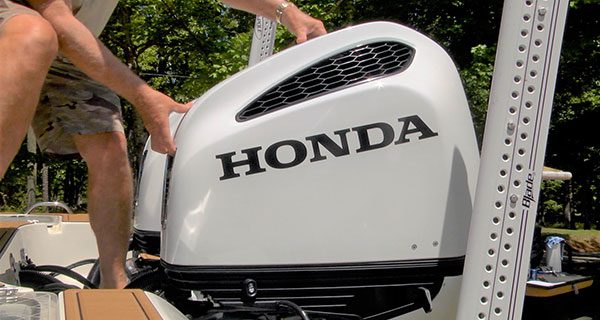
Wintertime is finally here, and your boat has been put on the trailer or on the storage rack to sit out the winter doldrums until the dogwoods bloom in the spring. If boats could talk, this is probably their loneliest time of year with nothing to do and no trips to the water. It’s kind of sad, actually.
If you find yourself with a few extra hours to spare on a winter weekend, there are a few things you might want to do that will make both your boat and you happy. You’ll find this especially true when it’s time to put her back on the water in the spring.
Now, depending on exactly where you live, winter may bring sub-zero temperatures for a few days or weeks, or in the deeper South, the thermometer may never go below 40 degrees. Either way, the cold temps and humidity changes can do some funny things to your boat, motor, and the gear you may have left on board.
Let’s assume that you’ve done all the winterizing preparations that I’ve written about before; drain plug out, fuel stabilizer, winterize the engine, checked and charged batteries, checked electrical connections, checked the trailer winch, bunks, wheel bearings, and performed a thorough cleaning inside and out. So what could be left to do, you’re thinking? OK, here are a few things to consider.
1. Did you remove your PFD’s (lifejackets and throwables) and put them in a dry place? Lifejackets are probably the single-most overlooked and important items on boats these days. It’s the old ‘out-of-sight, out-of-mind’ thing. They usually get stored in the bottom recesses of a compartment, and that compartment is probably damp. So check them for mildew, and either clean them really well, or if they’re really nasty, swap them out for some new ones. When you’re checking them, really tug on the straps and the seams where the neck meets the front flotation pieces. If there’s a tear or signs of weakness, replace them. If you get stopped by the DNR, Coast Guard, or Marine Patrol, and they see tattered PFD’s, those no longer qualify as reliable devices on the boat, and you could wind up with a ticket. If you ever find yourself in an emergency where you need them, no one wants a lifejacket that’s falling apart as they put it on.
2. Check your fire extinguisher. Again, this is another often overlooked but extremely important piece of safety gear on your boat. The dry chemical extinguishing agent in your fire extinguisher has a tendency to settle in the bottom of the canister. Since boats ‘pound’ as they’re zipping across the waves, the powder can cake up in the bottom. That presents the possibility that if you ever needed it, all that would come out would be the propellant, not the fire extinguishing powder. So, first check the gauge on the extinguisher. Tap it a couple times with your finger to insure that it’s not stuck. Then flip the extinguisher upside down and slap it on the bottom a few times with the palm of your hand or a rubber mallet to get all the powder fluffy again. Another issue that typically arises when boats are stored in the same location for an extended period of time, is caused by dirt dobber wasps. These industrious little critters will build their mud nests right inside the nozzle of your extinguisher, and you’ll never see it. So, take a flashlight and really check the nozzle to make sure it’s clean and free of debris.
3. If your boat is stored outside, leaves and other debris can get blown into the cockpit. Even if your boat has a tarp for cover, it’s amazing how much material can find its way into the hull. Sometimes all this stuff will wind up at your cockpit scuppers and clog them up. It gets damp, turns into ‘goo’, and can stain your gelcoat. Worse, if it completely clogs a drain or ends up in your bilge, this pile of leaves, sticks, and whatever, can prevent rainwater from draining. I’ve seen plenty of boats on trailers with flat tires because the boat’s bilge had filled up with water and the extra weight was too much for the tires.
4. OK, here’s one more for good measure. Remember point #2? Well, those pesky dirt dobbers love to stack up their mud in the Tell-Tale outlet of outboard engines, the small hole on the side of the motor that spits out water to let you know the water pump is working. I know, that’s a really tiny hole, but those little wasps can be partial to those openings, and they’ll also build their nests in the fuel vent on the side of the hull, too. To check the Tell-Tale outlet, straighten out a paper clip and gently push it up into the hole. If it’s clear, you’re good to go. If there’s resistance, then you should probably do a little more investigation.
Well, there’s a few things that can help to remove the boredom of a dreary winter’s day, and you can feel good that you’re doing things to keep your boat in tip-top condition, too. Plus, the time you spend with your boat will make it feel a lot less lonely. Tight lines and calm seas.